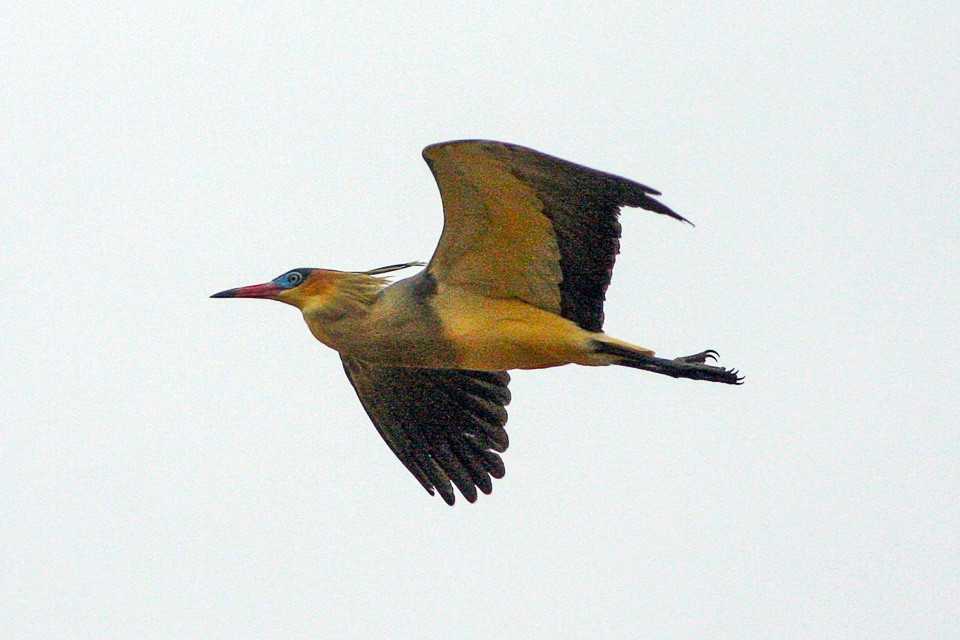Whistling Heron
A species of Whistling Heron Scientific name : Syrigma sibilatrix Genus : Whistling Heron
Whistling Heron, A species of Whistling Heron
Botanical name: Syrigma sibilatrix
Genus: Whistling Heron
Content
Description General Info
Description
The whistling heron measures 53 to 64 cm in length and weighs 521 to 546 g. The southern subspecies is bigger but has a shorter bill in proportion to the body. The overall impression of standing birds is gray, with flying birds showing conspicuous white rear parts (lower back, belly, and tail). In both subspecies, adults' upperparts except the lower back are blue-gray. The feathers of the sides of head, sides of the neck, breast, and scapular area are basically white but are stained gold to buff, perhaps by the powder down typical of herons or by secretions of the preen gland; the color varies from bird to bird. In the nominate subspecies, the crown and crest (separate plumes up to 4 cm long on the nape) are black and the upper wing coverts are cinnamon-colored; the crown and crest are slate-gray and the upper wing coverts are honey-colored (or "chamois") in fostersmithi. The bill is pink with blue to violet at the base and the distal third black, the legs are greenish and rather short, and there is a fairly big area of bare bluish skin around the eye. Juveniles have the same overall pattern but are duller than adults, with the crown lighter, the breast light gray, and the throat and sides unstained white. Chicks are undescribed. The bird is named for its most common call, a "loud, flute-like whistled kleeer-er" or "a high, reedy, complaining whistle, often doubled or uttered in a ser[ies], wueeee, wueeee,.…, easily imitated" or "a distinctive, characteristic, far-carrying, melodious whistle" that "can be rendered 'kee, kee, kee.'" It may also give "a slow, drawn-out whistle" when taking off. The alarm call is a harsh quah-h-h. Unlike other herons, in flight it has fast, duck-like wingbeats and usually does not retract its neck fully. 
Size
64 cm
Nest Placement
Tree
Feeding Habits
Whistling Heron primarily consumes insects, including grasshoppers, dragonfly larvae, and spiders, as well as earthworms and small vertebrates like frogs and tadpoles. Whistling Heron forages by walking, using its long legs to wade and its pointed bill to catch prey.
Habitat
The whistling Heron commonly inhabits tall dry grasslands, pastures, and damp grassy areas. This species prefers environments such as wet savannas, flooded fields, and habitats with shallow water, typically only a few centimeters deep. While highly terrestrial compared to other herons, whistling Heron also roosts in trees at night, indicating a degree of arboreal habitat use.
Dite type
Carnivorous
General Info
Feeding Habits
Bird food type
Species Status
Not globally threatened.
Scientific Classification
Phylum
Chordates Class
Birds Order
Pelicans and Relatives Family
Herons Genus
Whistling Heron Species
Whistling Heron 